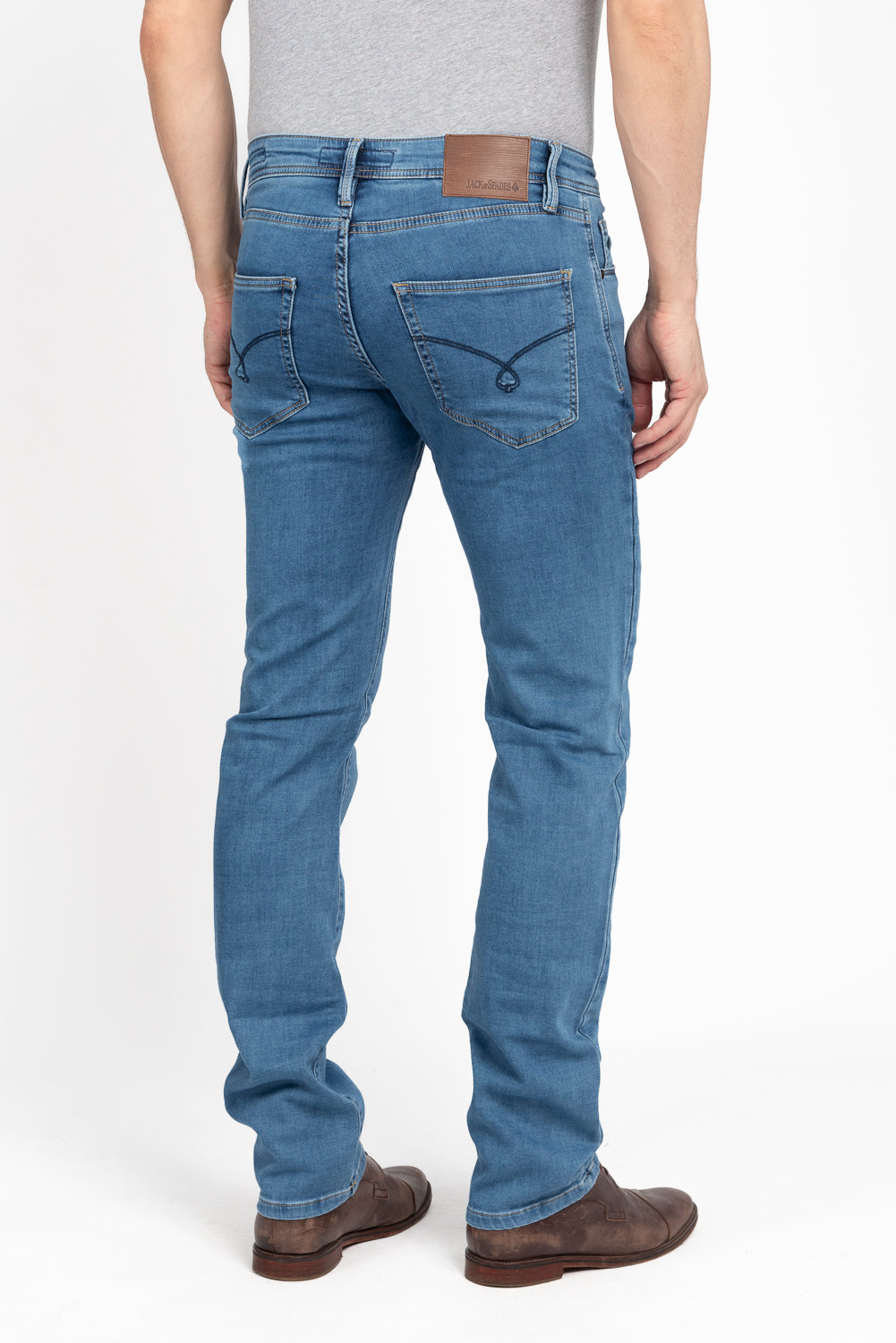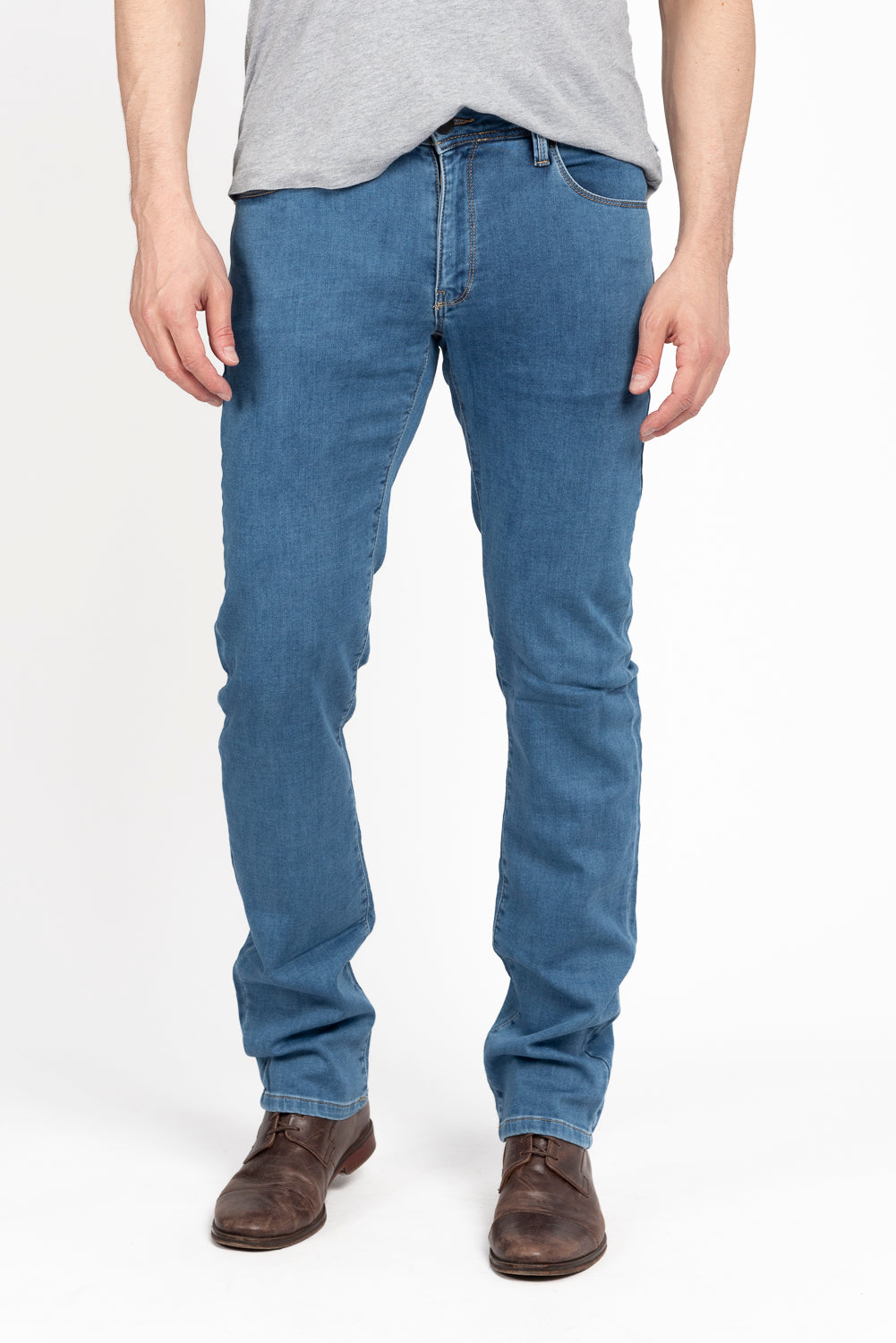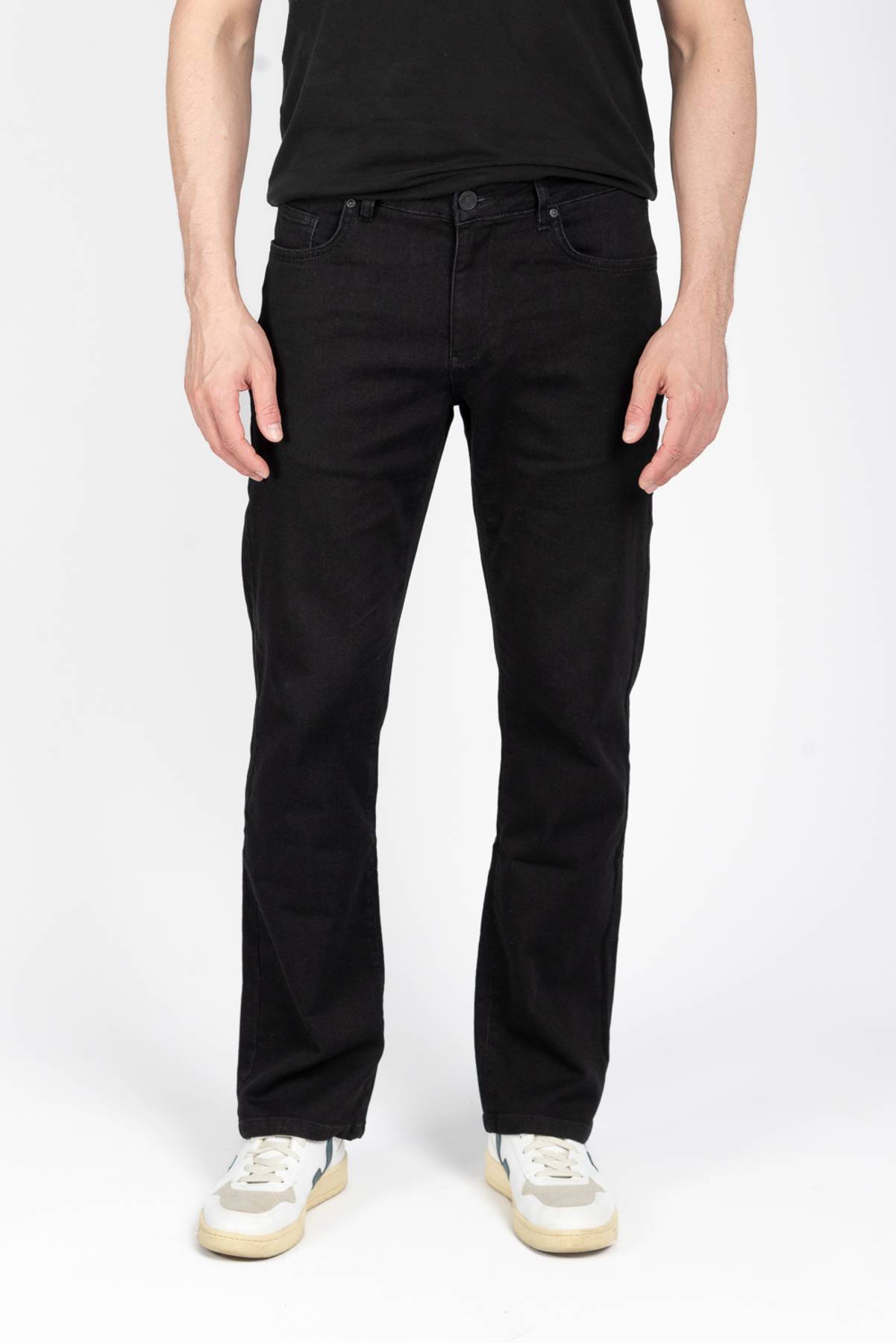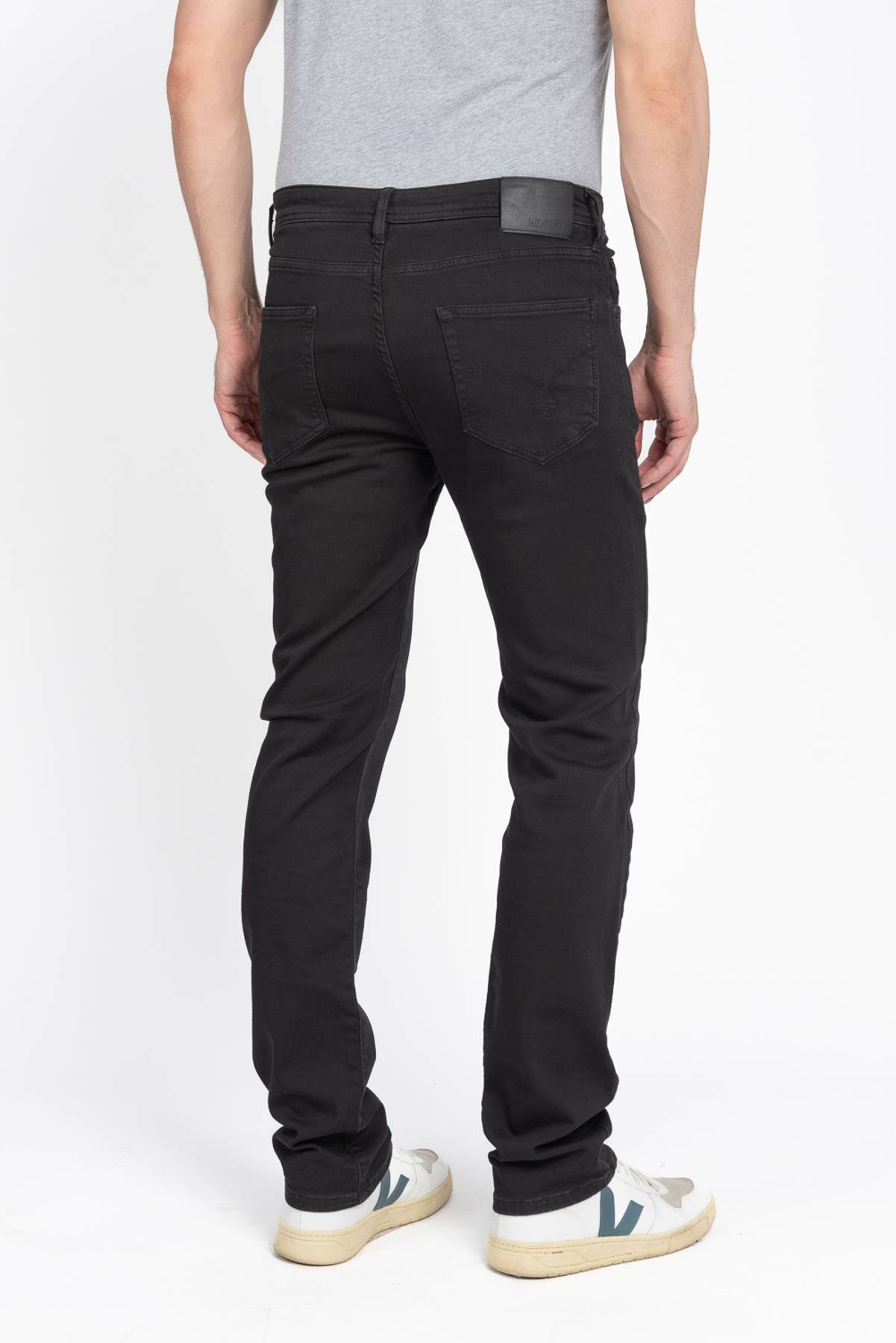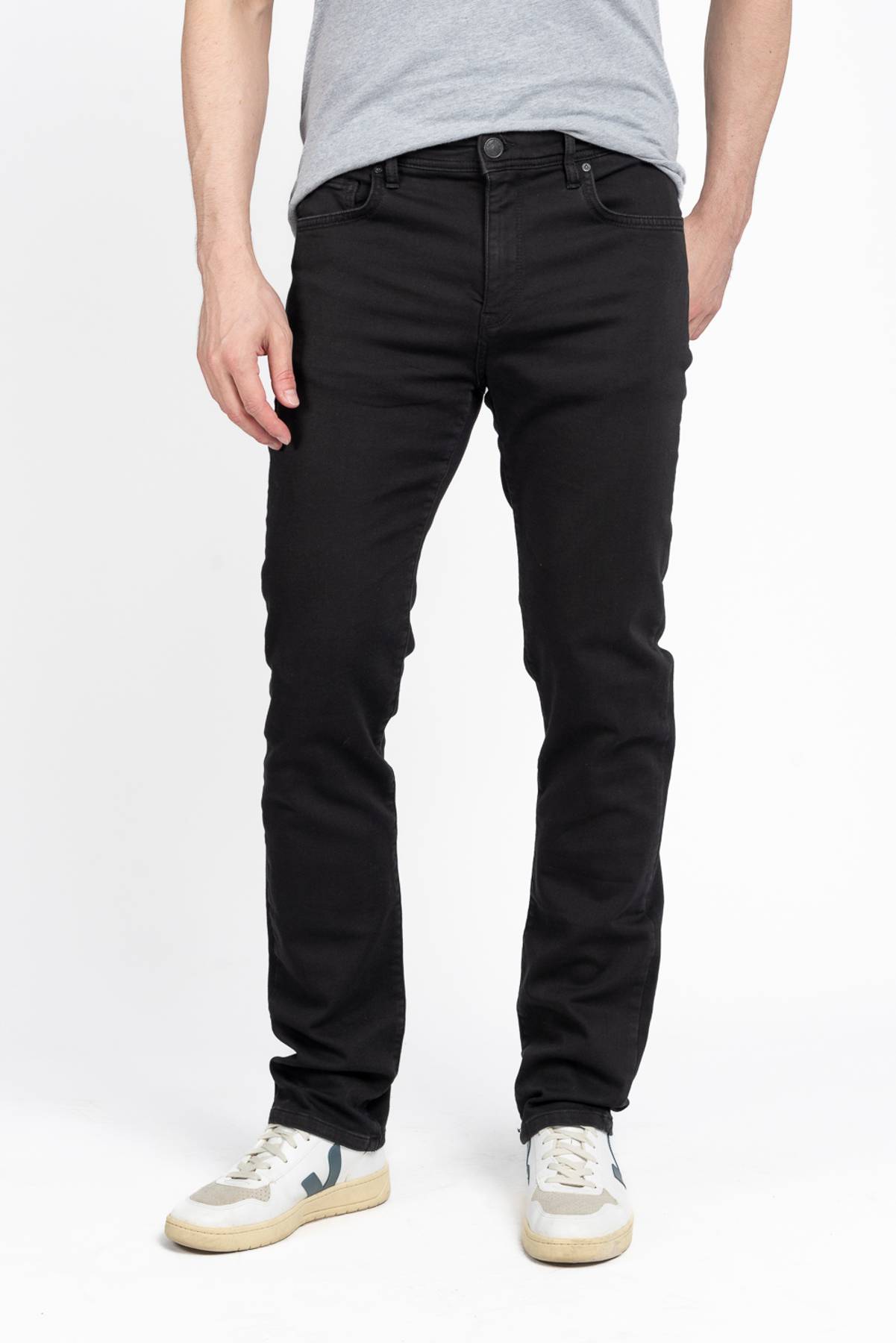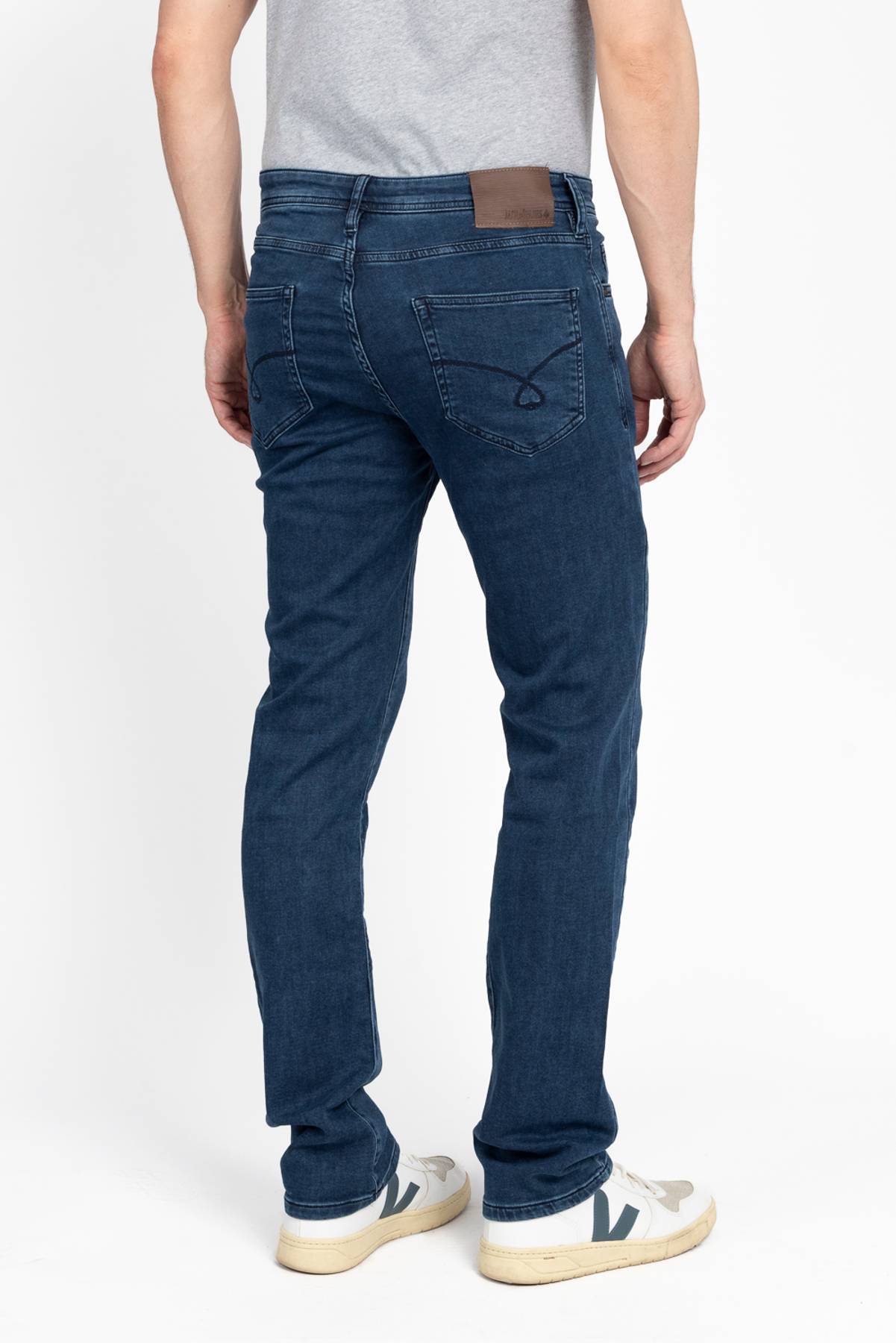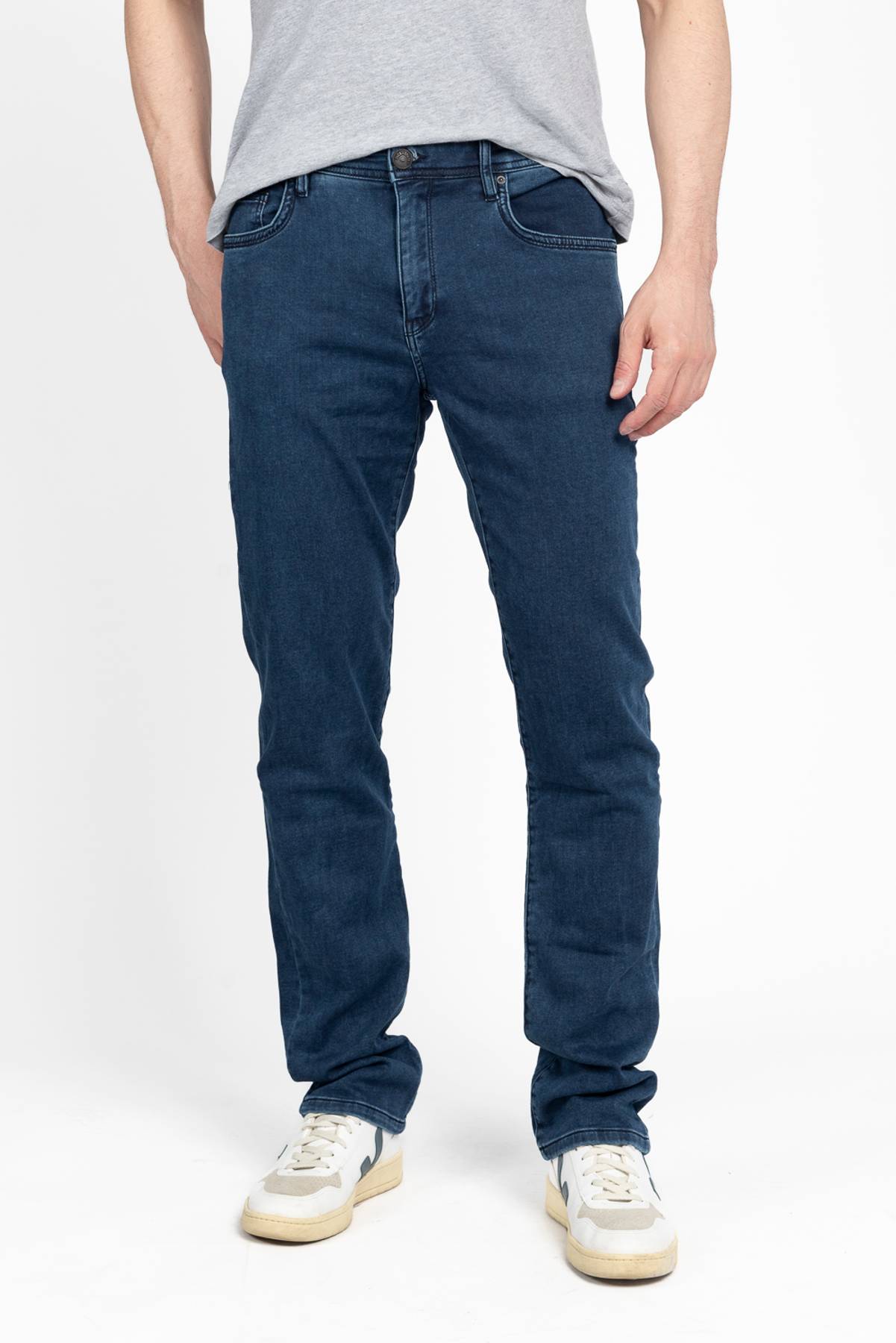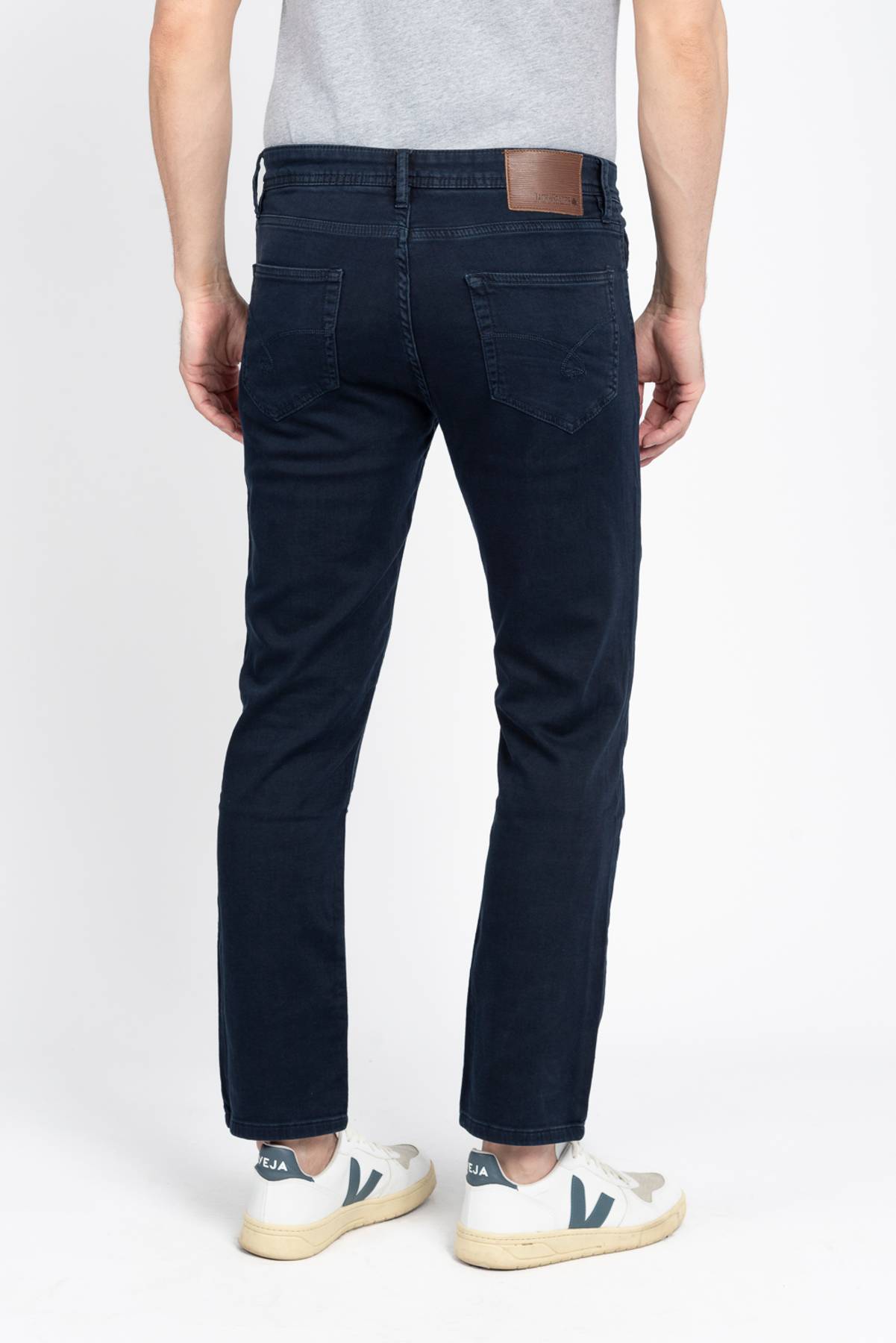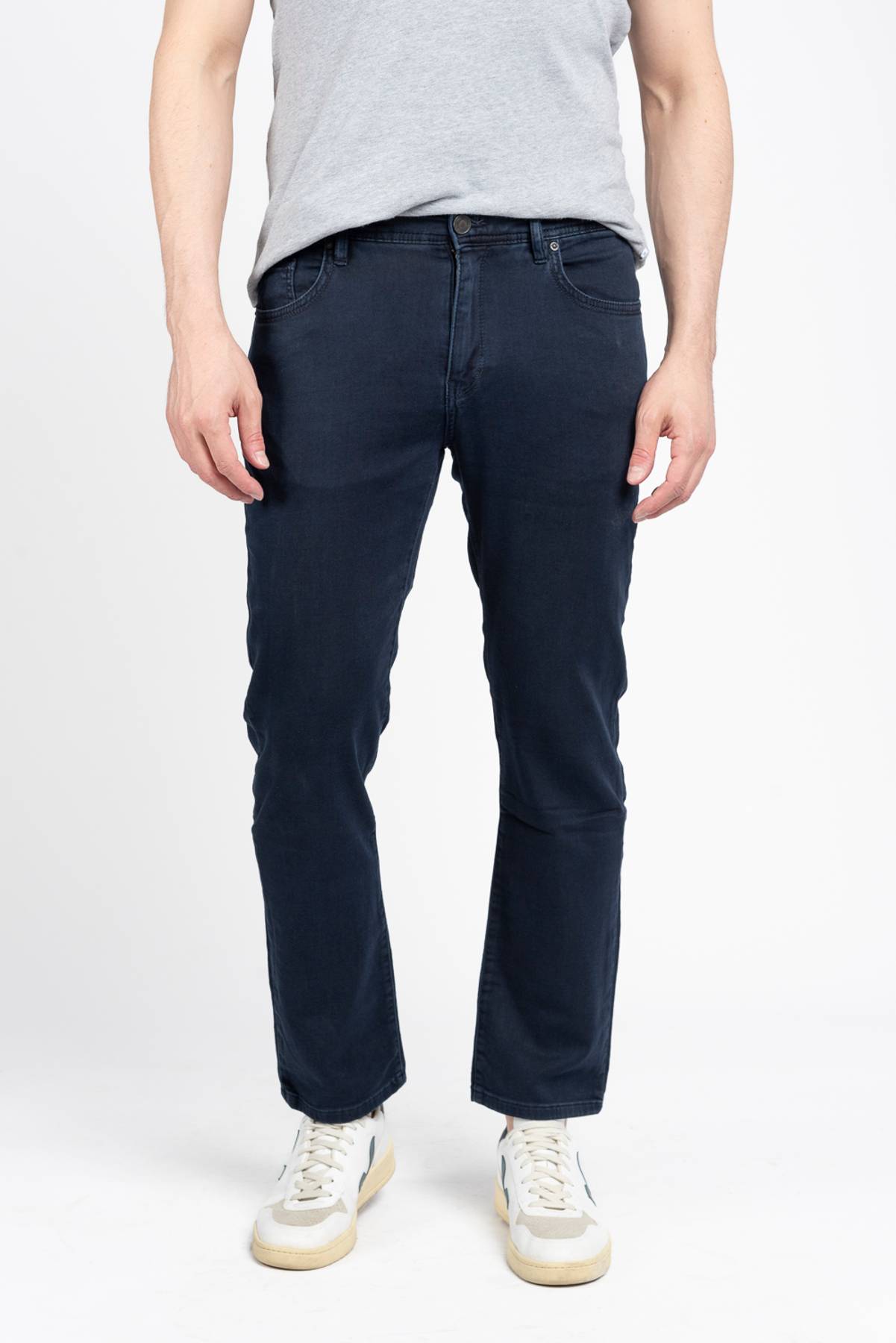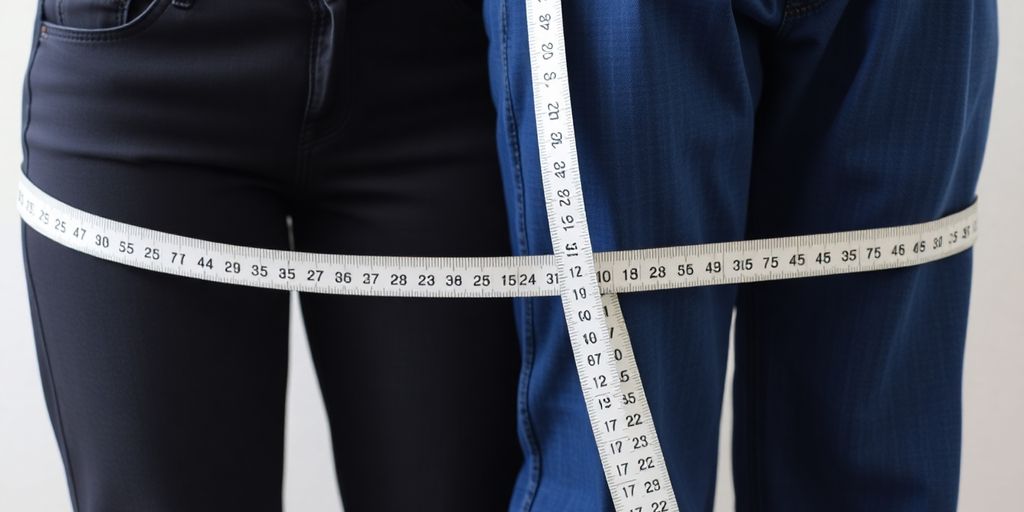Ever tried switching from women's to men's pants and ended up with a size that felt all wrong? You're not alone. The world of pant sizes can be a puzzle, especially when you're crossing the gender line. Women's pants usually revolve around waist and hip sizes, while men's are all about the waist and inseam. This guide is here to help you crack the code and find that perfect fit without the headache.
Key Takeaways
- Women's pants focus on waist and hip measurements; men's sizes highlight waist and inseam.
- Subtract 21 from a women's size to start finding the men's equivalent, but always try them on.
- Pay attention to the rise; women's pants often have a higher rise, affecting fit.
- Different brands, different fits—always check the specific brand's size chart.
- Tailoring can be your best friend when sizes don't match perfectly.
Understanding the Basics of Women's to Men's Pant Size Conversion

Key Differences in Sizing Systems
When you're trying to figure out pant sizes between women and men, it's like mixing apples and oranges. Women's pants usually focus on waist and hip measurements, while men's pants are all about the waist and inseam lengths. This difference can make shopping a bit of a puzzle, especially if you're eyeing a new style or brand. Generally, to switch from women's to men's sizes, you subtract 21 from the women's size. So, if you're a women's size 8, you're looking at a men's size 27. Keep in mind, though, this is just a jumping-off point. Trying on different styles is key because cuts and fits can vary a lot from brand to brand.
Common Misconceptions About Pant Sizes
There's a lot of confusion out there about pant sizes, and it's easy to see why. One big misconception is that a size is just a size, but that's not true at all. Women's pants often have a higher rise, which changes how they sit on the waist and hips. On the flip side, men's pants usually have a lower rise, giving them a different silhouette. So, when you're converting sizes, think about the style of pants you want. For instance, if you're checking out men's chinos, pick a size that fits your hips well while still being comfy around the waist.
Why Accurate Conversion Matters
Getting the right pant size isn't just about looking good; it's about feeling good too. Pants that fit well can boost your confidence and comfort. Ill-fitting pants, however, can be a real pain, restricting movement and making you feel awkward. By understanding the differences in men's and women's sizing, you can make sure you get a better fit and a more stylish look. And if you're looking for a blend of style and comfort, check out the Jack Fit Medium Comfort Classic Denim for a range of sizes that aim for the perfect fit.
How to Measure for the Perfect Fit
Taking Waist Measurements Correctly
Getting the waist measurement right is a big deal when you're trying to find pants that fit well. Start by grabbing a flexible measuring tape. Wrap it around the narrowest part of your waist, which is usually just above your belly button. Make sure it's snug but not too tight. Don't suck in your stomach or anything—just stand naturally. It's best to measure a couple of times to ensure accuracy.
Understanding Inseam Length
The inseam is the distance from the crotch to the bottom of the pant leg. To measure it, take a pair of pants that fit you well and lay them flat. Measure from the crotch seam to the hem. If you're buying new pants, this measurement helps you avoid pants that are too short or drag on the ground.
Importance of Hip Measurements
For a comfortable fit, especially with tighter pants, hip measurements are crucial. Stand with your feet together and wrap the measuring tape around the fullest part of your hips. Make sure it's level all the way around. This measurement ensures the pants will fit over your hips without being too tight or too loose.
Accurate measurements can save you from the hassle of returns and exchanges. They help you find clothes that fit right the first time, making shopping a lot less stressful. Plus, you'll feel more confident knowing your clothes fit well.
Decoding Men's Pant Sizing
Navigating Different Sizing Systems
Deciphering men's pant sizes can feel like cracking a code. Men's pants are often labeled with two numbers, like 32x34. The first number is the waist measurement, and the second is the inseam length. This simple format can vary across different regions and brands. In the US, you might see sizes like 32W x 34L, while European sizes could be different.
Here's a quick guide to some common sizing systems:
- US Sizing: Usually displayed as waist x inseam (e.g., 32W x 34L).
- UK Sizing: Often similar to US but can differ slightly in cut and fit.
- European Sizing: Typically uses a single number, which can be confusing if you're used to the waist x inseam format.
Understanding these differences is key to finding the right fit, especially when shopping for styles like the Jack Fit Medium Comfort Classic Denim, which emphasizes both style and comfort.
The Role of Rise in Fit
The rise of a pair of pants is the distance from the crotch seam to the top of the waistband. This measurement plays a huge role in how pants fit and feel. Men's pants generally have a lower rise compared to women's pants, which can affect the overall silhouette.
- High Rise: Sits above the natural waist, often giving a more traditional look.
- Mid Rise: Hits right at the waist, offering a balance between comfort and style.
- Low Rise: Sits below the waist, often used in more casual or trendy styles.
Choosing the right rise is essential for comfort and style, especially when considering options like the High Roller Fit Medium Comfort Classic Denim, which caters to diverse style preferences.
How Brand Variations Affect Sizing
Not all brands follow the same sizing standards, which can make shopping a bit of a guessing game. Some brands might have their own unique sizing charts, so it's always a good idea to check.
- Inconsistencies Across Brands: A 32 in one brand might fit like a 34 in another.
- Fit Guides: Many brands offer fit guides to help you choose the right size. These guides can be invaluable, so don't overlook them.
- Customer Reviews: Reading reviews can provide insights into how a brand's sizing runs, whether it's true to size, or if you might need to size up or down.
When in doubt, try multiple sizes and styles to find what works best for your body. Remember, the perfect fit is out there, but it might take a little patience and experimentation to find it.
Using Conversion Charts Effectively
Reading and Interpreting Size Charts
When you're trying to find the right size, size charts are like a trusty map. They lay out the measurements for each size, usually covering waist, hips, and inseam. But here's the kicker: these charts don't always tell the whole story. Some pants might fit differently because of the fabric or the way they're made. So, while charts are super helpful, don't rely on them entirely.
Tips for Accurate Size Conversion
Getting the conversion right can save you a lot of hassle. Here are some handy tips:
- Know Your Measurements: Before diving into charts, measure your waist, hips, and inseam. Keep these numbers handy.
- Check the Brand's Chart: Different brands, like Jack Fit Medium Comfort Classic Denim, have their own sizing quirks. Always check their specific chart.
- Consider the Fabric: Stretchy materials might mean you can go a size down. Read the product description carefully.
Conversion charts are great, but they're just a starting point. Trust your measurements and instincts too.
Common Pitfalls to Avoid
Even with the best charts, things can go wrong. Watch out for these common issues:
- Ignoring Brand Differences: Each brand, like High Roller Fit Medium Comfort Classic Denim, has its own fit. Don't assume one size fits all.
- Forgetting About Cut and Style: A slim fit will hug you differently than a regular cut. Check the style before buying.
- Overlooking Reviews: Customer reviews can give you a real-world idea of how a size fits. They often highlight if the pants run small or large.
Troubleshooting Fit Issues

Adjusting for Different Body Types
Getting the right fit can be tricky, especially when you're trying to convert women's pant sizes to men's. Different body shapes mean that a one-size-fits-all approach just doesn't work. Consider these factors when adjusting for body types:
- Waist and Hip Ratio: Women's pants often accommodate wider hips, so when converting to men's sizes, you may need to size up in the waist.
- Leg Shape and Length: Some people have longer or shorter legs relative to their torso, affecting how pants fit.
- Rise Preference: High-rise or low-rise pants can make a big difference in comfort and appearance.
When to Consider Tailoring
Sometimes, off-the-rack sizes just aren't going to cut it. That's when tailoring becomes your best friend. Tailoring can:
- Provide a Custom Fit: Adjust the waist, inseam, and even taper the legs for a more personalized fit.
- Enhance Comfort: By ensuring the pants fit well in all the right places, tailoring can prevent chafing and discomfort.
- Boost Confidence: Well-fitted clothing can make you feel more confident and comfortable in your appearance.
Dealing with Brand Inconsistencies
Inconsistencies in sizing are frustratingly common, thanks in part to vanity sizing. To tackle this issue:
- Know Your Measurements: Always have your waist, hip, and inseam measurements handy.
- Check Size Guides: Different brands like Jack Fit Tan Twill by Jack Of Spades may have their own sizing quirks, so always consult their specific size guides.
- Be Ready to Try Multiple Sizes: If possible, order a couple of different sizes and return what doesn't fit. Understanding return policies can save you a lot of hassle.
Remember, finding the right fit is often a journey of trial and error. Don't get discouraged if the first pair isn't perfect—there's always another option out there.
Shopping Tips for Women's to Men's Pant Conversion
Finding the Right Style and Fit
Shopping for pants can be tricky, especially when you're moving from women's to men's sizes. The key is to focus on what feels comfortable and looks good on you. Start by considering the style you're after. Are you looking for something casual, like jeans, or something more formal, like chinos? Each style will have its own fit nuances.
- Know your measurements: This is crucial. You'll want to know your waist, inseam, and hip measurements.
- Try different fits: Men's pants come in various fits like slim, regular, and relaxed. Don't hesitate to try different ones to see what suits your body shape best.
- Consider the fabric: Different materials will drape differently on your body. For example, corduroy might fit differently than denim.
Online Shopping Considerations
Shopping online adds another layer of complexity, but it can be convenient once you know what you're doing. Here's how to make it work for you:
- Check the size chart: Always refer to the size chart provided by the retailer. Sizes can vary significantly between brands.
- Read product descriptions carefully: Look for details on the fit, rise, and fabric.
- Look for free returns: This allows you to try on the pants and return them if they don't fit.
"Shopping online can feel like a gamble, but with the right prep, you can stack the odds in your favor."
Leveraging Customer Reviews
Customer reviews are gold when shopping for pants online. They can give you insights that aren't available in product descriptions.
- Look for comments on fit: See if multiple reviewers mention the pants running large or small.
- Check for quality remarks: Reviews often mention whether the fabric feels cheap or if the stitching is poor.
- Use reviews for style tips: Some reviewers will post pictures or describe how they styled the pants, which can give you ideas.
When you're ready to explore new styles, consider the High Roller Fit Tan Corduroy from Jack Of Spades. It's a versatile piece that fits well into any wardrobe.
Conclusion
So, there you have it! Converting women's pant sizes to men's isn't as tricky as it seems once you get the hang of it. Just remember, it's all about the numbers and a bit of trial and error. Subtracting 21 from your women's size is a good start, but don't forget to try on different styles and cuts. Each brand has its quirks, and what fits perfectly in one might not in another. Keep an eye on the rise and the fit around the hips and waist. With a little patience and some practice, you'll be swapping sizes like a pro. Happy shopping!
Frequently Asked Questions
How do I convert women's pant sizes to men's?
To convert women's pant sizes to men's, subtract 21 from the women's size. For example, a women's size 8 would be roughly a men's size 27. However, trying on different styles is important as fits can vary.
Why do men's and women's pant sizes differ?
Men's pants are usually sized by waist and inseam, while women's sizes are based on waist and hip measurements. This difference can cause confusion when trying to find the right fit.
What should I do if I'm between sizes?
If you're between sizes, it's often better to choose the larger size. You can use a belt or get the pants tailored if needed. It's easier to adjust a larger size than to fit into a smaller one.
Do all brands have the same sizing?
No, different brands can have different sizing standards. It's always a good idea to try on pants or check the brand's size chart before buying.
How important is the rise in pants?
The rise of pants affects how they fit at the waist and hips. Women's pants often have a higher rise than men's, so it's important to consider when converting sizes.
Can I rely on size charts for accurate conversion?
Size charts are helpful, but they are just a guide. It's best to try on pants if possible, as cuts and fits can vary between brands.

